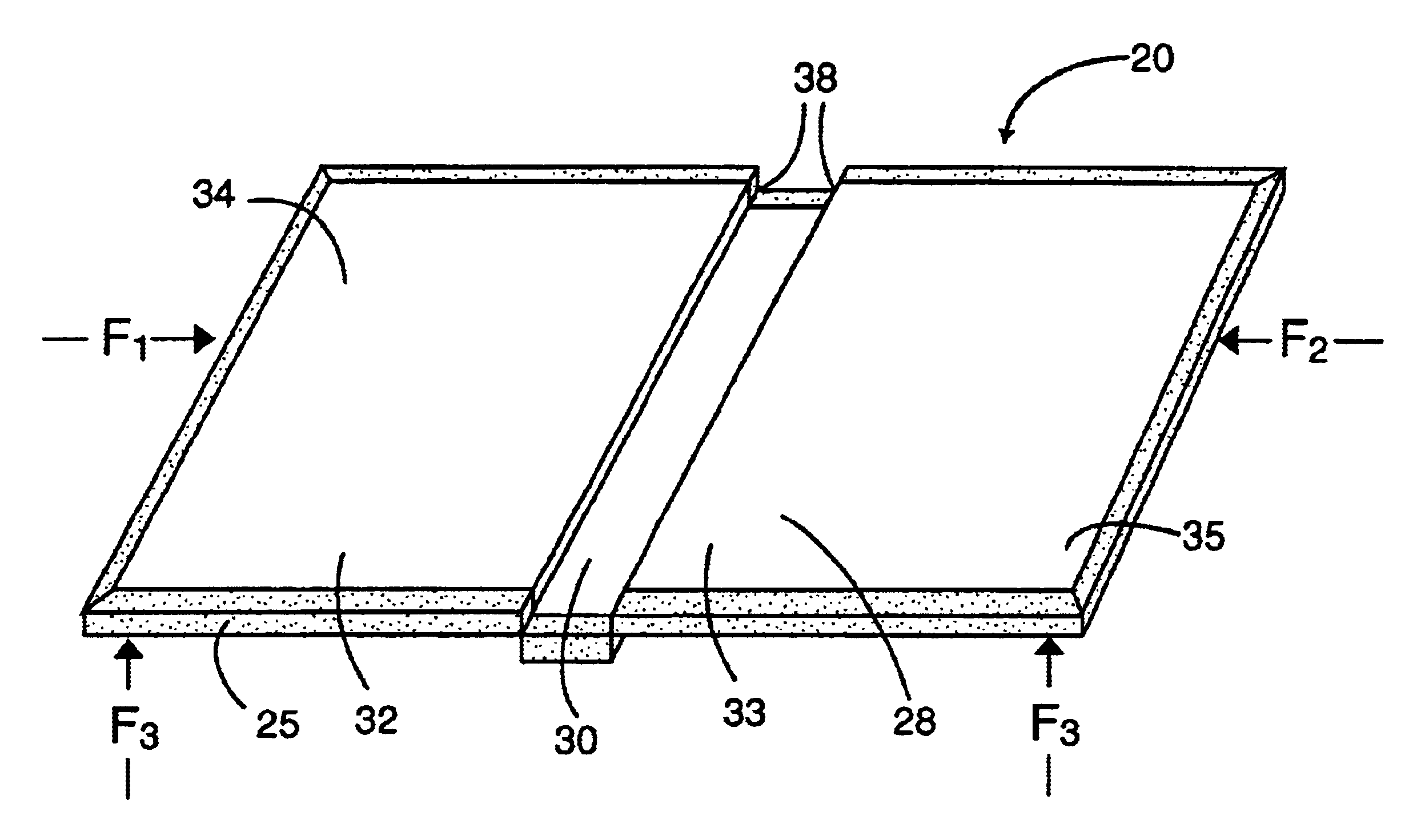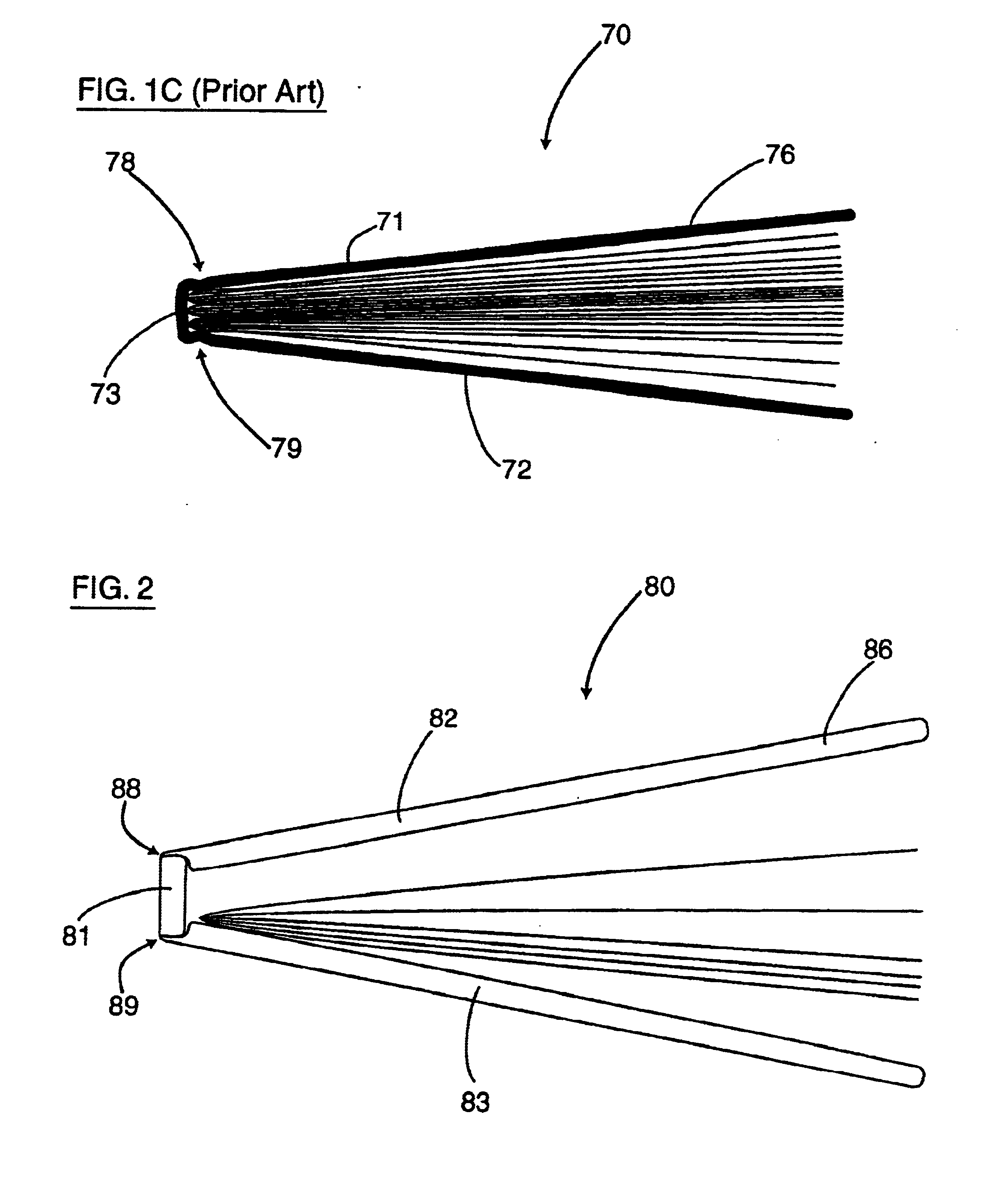Outside-hinged cover for protecting articles stored therein and method for fabricating same
a technology for protecting articles and hinges, applied in the field of protective covers, can solve the problems of difficult opening of front panels, and easy cracking of hinges, and achieve the effect of no wasted materials and easy opening
- Summary
- Abstract
- Description
- Claims
- Application Information
AI Technical Summary
Benefits of technology
Problems solved by technology
Method used
Image
Examples
Embodiment Construction
[0037]Turning now to FIG. 3, an exemplary packaging hinged cover (or “book”) 20 consistent with the invention in its initial phase of construction is illustrated. First, the cover 25 is laid out flat, and if the outside of the hinged cover is to be printed, then the printed side faces down. Next, glue (not shown) is spread onto the exposed side of the cover 25. As shown, three panel cores—a front 21, spine 22, and rear 23 panel core—are placed on the cover 25 prior to being affixed thereto. Resultant overhanging flaps 26 extend beyond the panel cores 21-23, each flap 26 in this exemplary embodiment having an isosceles trapezoidal form (although it should be noted that the flaps 26 could alternatively be convex hexagonal or rectangular forms to accommodate the thickness of the panels, or other geometric forms). The front 21 and rear 23 panel cores have the same length, width (thickness), and height, and the spine panel core 22 has the same width as the front 21 and rear 23 panel core...
PUM
 Login to View More
Login to View More Abstract
Description
Claims
Application Information
 Login to View More
Login to View More - R&D
- Intellectual Property
- Life Sciences
- Materials
- Tech Scout
- Unparalleled Data Quality
- Higher Quality Content
- 60% Fewer Hallucinations
Browse by: Latest US Patents, China's latest patents, Technical Efficacy Thesaurus, Application Domain, Technology Topic, Popular Technical Reports.
© 2025 PatSnap. All rights reserved.Legal|Privacy policy|Modern Slavery Act Transparency Statement|Sitemap|About US| Contact US: help@patsnap.com



